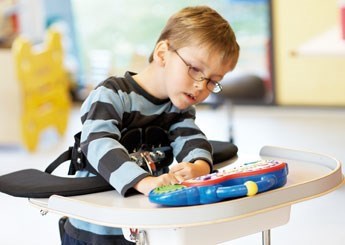
The National Institute for Health and Care Excellence (NICE) has published its first dedicated guideline on diagnosing and managing cerebral palsy in under 25s, in an attempt to improve recognition and treatment of the condition.
NICE’s first guideline on cerebral palsy aims to improve diagnosis and treatment across the country.
Last year 192 of 209 CCGs, responding to a survey by charity, Action Cerebral Palsy, did not have specific care pathways for children and young people with cerebral palsy, but 14 did.
The new guideline focuses on the causes of cerebral palsy and how to treat common comorbidities such as saliva control, pain, mental health and communication issues.
Recommendations include: recognising that parents and familiar carers have a key role in recognising and assessing pain, discomfort and distress in children and young people with cerebral palsy and that all children with delayed motor milestones should be referred to a child development service for further assessment.
Professor Mark Baker, Director of the Centre for Guidelines at NICE, said: “Cerebral palsy is a life changing condition for families but we know the earlier we can identify cerebral palsy the more effective our interventions can be.
“This guideline will help drive improvements in the standard of care for people with cerebral palsy across the country and ensure both clinicians and families are aware of common comorbidities to watch out for.”
Cerebral palsy is the most common cause of physical disability in children and young people in the developed world. In the UK it is estimated that 1 in 400 babies is born with cerebral palsy, with approximately 1,800 children diagnosed each year.
Dr Charlie Fairhurst, consultant in paediatric neurodisability at Evelina London Children’s Hospital and chair of the guideline development group, said: “My main concern coming into this guideline was disparity of care and ensuring there is equitable access to early recognition, intervention and services for all children.”
Action Cerebral Palsy’s report also found that a lack of awareness of how to access specialist support was leading to late diagnosis and missed opportunities for effective early interventions.
Dr Neil Wimalasundera, consultant in paediatric neurodisability at Great Ormond Street Hospital and member of the guideline development group, said: “My hope is this guideline will help improve the diagnosis of cerebral palsy and reduce variation in clinical practice across the country. Historically patients haven’t been routinely offered MRIs to confirm diagnosis when the cause of cerebral palsy is not clear – this guideline will help guide appropriate investigations when needed.
“Getting the diagnosis of cerebral palsy correct and recognising red flags for other conditions is essential. Delays in diagnosis can mean potential treatments may be delayed or missed altogether.”
NICE previously published a guideline in 2012 on the management of spasticity in under 19s which included recommendations on managing the motor difficulties of cerebral palsy.
NICE is currently developing a further guideline on the management of cerebral palsy in adults.
FURTHER INFORMATION
Find Out More
Number of subscribers: 0
